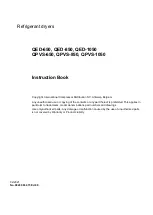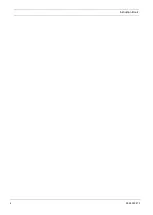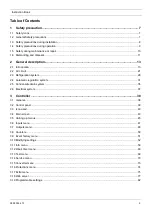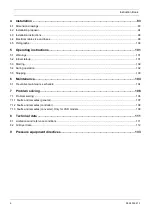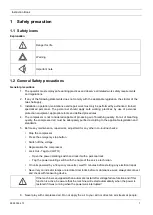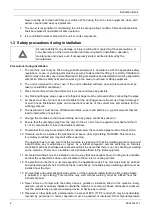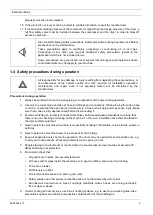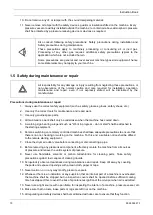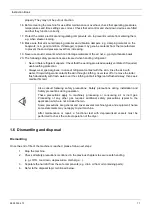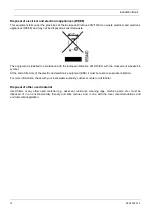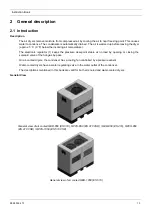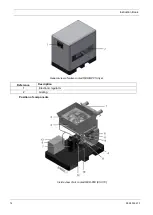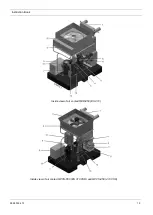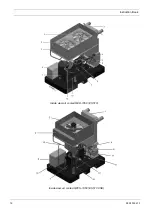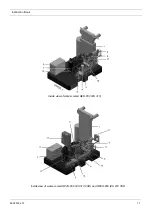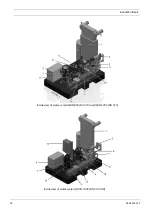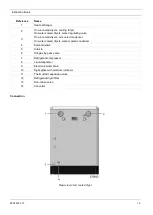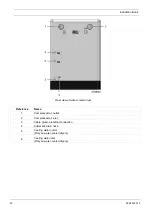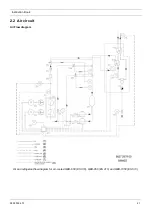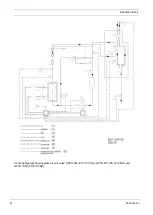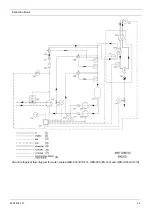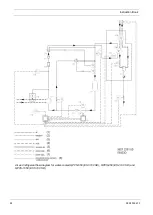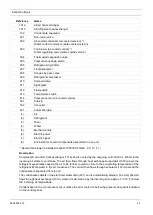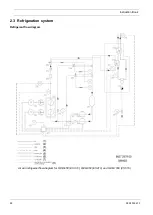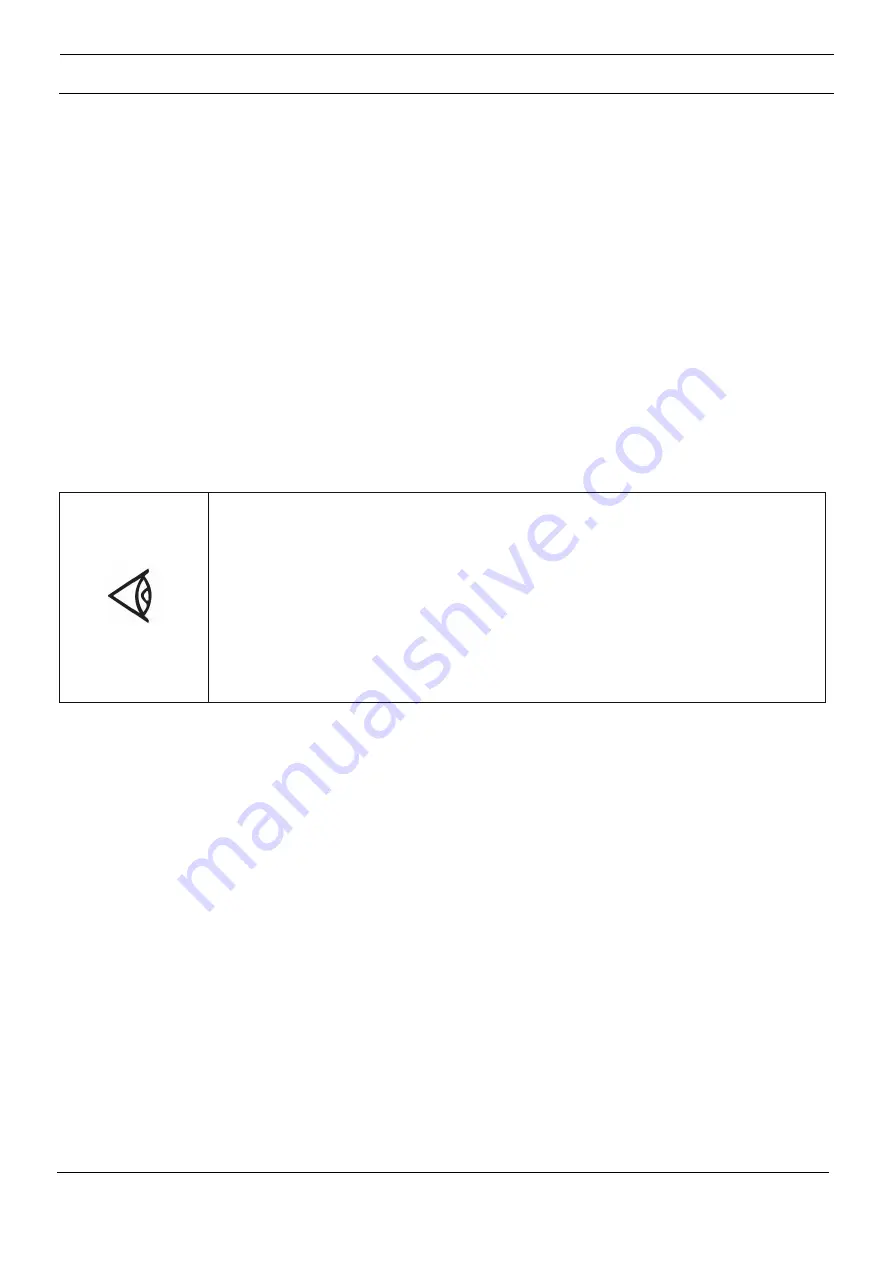
Instruction Book
9828 0934 73
11
properly. They may not be put out of action.
16. Before clearing the machine for use after maintenance or overhaul, check that operating pressures,
temperatures and time settings are correct. Check that all control and shut-down devices are fitted
and that they function correctly.
17. Protect the motor, electrical and regulating components, etc. to prevent moisture from entering them,
e.g. when steam-cleaning.
18. Make sure that all sound-damping material and vibration dampers, e.g. damping material on the
bodywork, is in good condition. If damaged, replace it by genuine material from the manufacturer
to prevent the sound pressure level from increasing.
19. Never use caustic solvents which can damage materials of the air net, e.g. polycarbonate bowls.
20. The following safety precautions are stressed when handling refrigerant:
•
Never inhale refrigerant vapours. Check that the working area is adequately ventilated; if required,
use breathing protection.
•
Always wear special gloves. In case of refrigerant contact with the skin, rinse the skin with
water. If liquid refrigerant contacts the skin through clothing, never tear off or remove the latter;
flush abundantly with fresh water over the clothing until all refrigerant is flushed away; then seek
medical first aid.
Also consult following safety precautions: Safety precautions during installation and
Safety precautions during operation.
These precautions apply to machinery processing or consuming air or inert gas.
Processing of any other gas requires additional safety precautions typical to the
application which are not included herein.
Some precautions are general and cover several machine types and equipment; hence
some statements may not apply to your machine.
After maintenance or repair, a functional test with depressurized vessels must be
performed to check the correct operation of the dryer.
1.6 Dismantling and disposal
Dismantling
Once the end of life of the machine is reached, please follow next steps:
1.
Stop the machine.
2.
Check all safety precautions mentioned in the previous chapters to secure safe handling
(e.g. LOTO, cool-down, depressurize, discharge, ...).
3.
Separate the harmful from the safe components (e.g. drain oil from oil containing parts).
4.
Refer to the disposal topic mentioned below.



